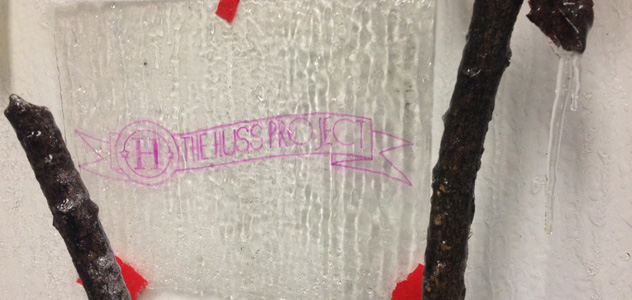
Last fall after almost all of the leaves had fallen off the trees, I donned my red rubber boots and got up on the roof (or shall I say “roofs” — Huss has seven of them) with Jay and Rob to clear the drains of debris before winter set in. For those unfamiliar with large, flat roofs, here’s how it works: a slight pitch directs water to a central drain, or several drains if the roof is very large, so that the weight and moisture don’t sit on the roof and degrade the surface. Flat roofs are usually covered in some sort of flexible membrane which, along with the drains, requires regular maintenance to keep things flowing properly.
Even though we cleaned the drains at Huss last fall, this winter has proven a huge challenge for anyone with a flat roof. With the record amounts of snow we’ve gotten combined with a sudden thaw, it seems like each week, there’s a new story in the paper about a roof collapse. Thankfully, we’ve been spared the worst of it (so far), but the roof has certainly let us know that we’ve got some work to do in the spring. If we’ve been wondering where to start with the money we’ve raised through the Brick Campaign, that question has been answered: the top.
Due to knee-high (and then some) drifts of snow, the unheated school has been largely inaccessible for much of this winter. However, last Thursday, our friend Chad stopped by Huss to pick up some things and was greeted by the sound of a rainstorm — inside. We arrived to discover that the seal around one of the vent stacks had given way and the water was falling not just on the second floor, but down to the first floor as well. Commence frantic efforts: we set up a tarp to catch water on the second floor and buckets and bins on the first floor, and shoveled as much as we could off the corner of the roof that was leaking to expose the faulty seal and re-open the nearby drain. We also employed a trick we learned from a friend of ours and filled thigh-high stockings with rock salt to put around the drain and help keep the water flowing. The next day, which was windy and sunny as could be, we applied a coating of sealant around the stack, pumped the water out of our impromptu swimming pool on the second floor and cleaned up as much of the mess as we could, since quite a bit of it had re-frozen already.
To our chagrin, a trip to the school to check on things the following day revealed another torrential leak in a different part of the building. Altogether, six of us pitched in for five hours, shoveling, breaking ice, mopping, tarping, pumping water, filling stockings with salt, and aiming space heaters at frozen drains. Four of us spent another two hours yesterday shoveling more snow and slush, clearing additional drains and pumping more water.
As frustrating as this development has been, we’re aware of the many reasons we have to be grateful: for vision and friendship to sustain us in the depths of this difficult winter; for the fact that we hadn’t yet renovated the kindergarten room as we’d planned — work that would have been destroyed by the second leak; for Chad’s timely visit to the hibernating facility, and for the mystery friend who plowed our previously inaccessible parking lot; for clever ideas involving pantyhose and Quickrete. The embattled roof has clarified direction and needs, and provoked us to renew our commitment to an important historic building and all of the creative potential it holds inside its 95-year-old walls. Thank you for your thoughts, prayers and support as we discern the wise way forward, even with frozen toes and aching backs.



